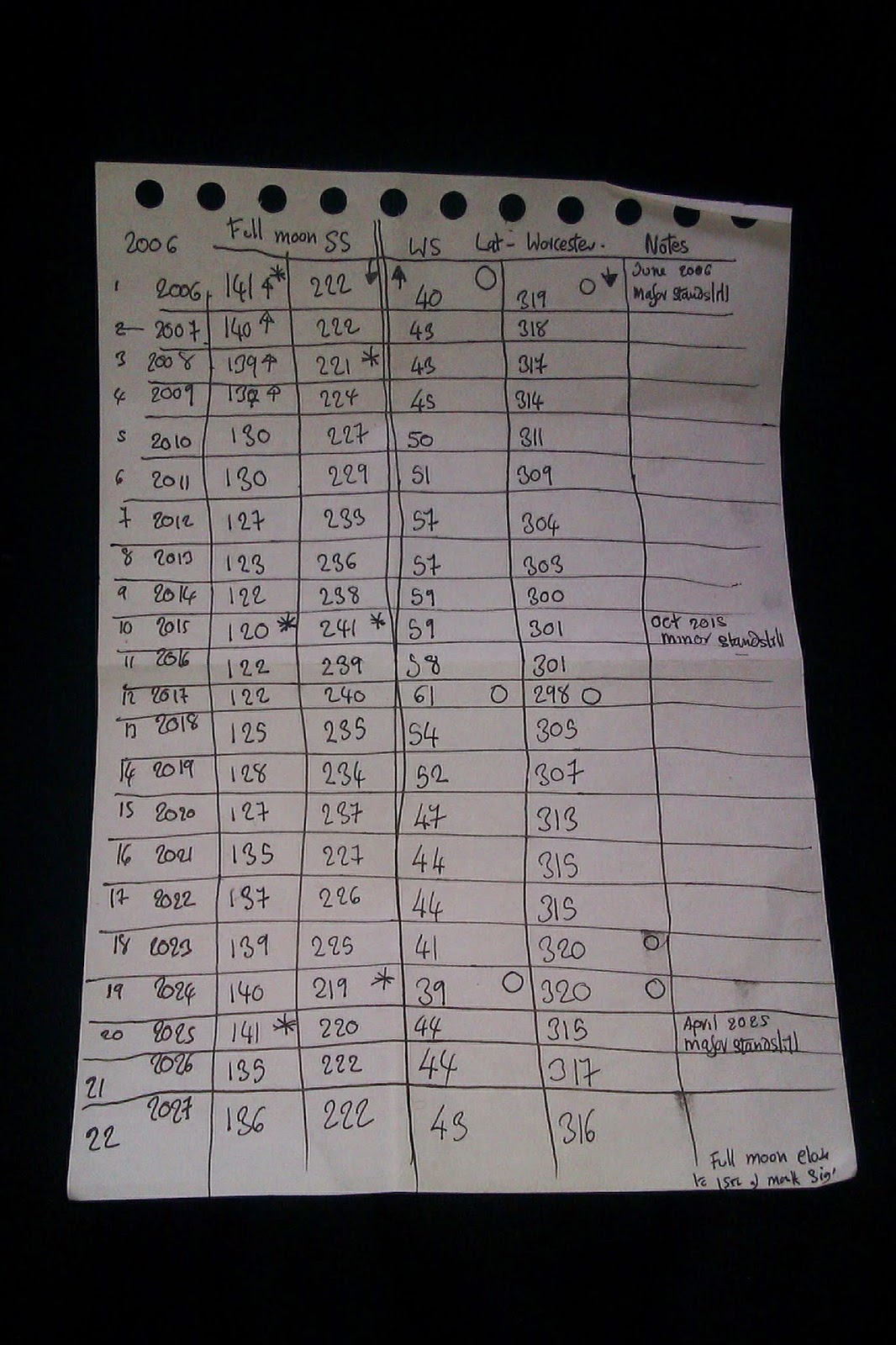I wanted to know what the correspondence is between years of major and minor lunar 'standstills' and the dates of maximum and minimum solstice azimuths. So here are the moon rise and set azimuths for ss (summer solstice) and ws (winter solstice) starting 2006 - a year with a major standstill - and ending 2027 (for no good reason other than it being the bottom of the page).
The dates for major lunar standstills came from Wiki and represent incomplete information, but the year dates are good enough for my purpose.
The significant standstill years are:
The significant thing for people who champion Thom's lunistice theories, is the height of the moon (elevation angle) in one month. In major lunistice years the moon's declination varies from maximum above the ecliptic to maximum below the ecliptic in the same month; measured as the moon crosses the meridian.
At the minor standstill, the moon's rise and set positions are closest to east and west. In a minor lunistice year, the moon's declination varies less than normal.
The first number is azimuth and the second number is the year.
The moon positions were for Worcester, UK and are practically idealized versions of the moon. The moon's position as seen from the ground isn't often the same as the moon's mathematical position, as measured from the center of the earth!
Nevertheless, the error is uniform, so it will do.
Getting rid of the orange and blue lunistice paint...it is interesting to note that the distance between minimum and maximum north-west, north-east and south-east rise moon positions is 20 degrees. But the distance between points in the south-west quadrant is twice that, 40 degrees!
Of course there is more than just the moon in the sky....
A photo of Venus at The Sanctuary, winter sunset, I'm looking south-west.
The dates for major lunar standstills came from Wiki and represent incomplete information, but the year dates are good enough for my purpose.
The significant standstill years are:
- Major- 2006 and 2025.
- Minor - 2015.
The significant thing for people who champion Thom's lunistice theories, is the height of the moon (elevation angle) in one month. In major lunistice years the moon's declination varies from maximum above the ecliptic to maximum below the ecliptic in the same month; measured as the moon crosses the meridian.
At the minor standstill, the moon's rise and set positions are closest to east and west. In a minor lunistice year, the moon's declination varies less than normal.
The first number is azimuth and the second number is the year.
The moon positions were for Worcester, UK and are practically idealized versions of the moon. The moon's position as seen from the ground isn't often the same as the moon's mathematical position, as measured from the center of the earth!
Nevertheless, the error is uniform, so it will do.
Getting rid of the orange and blue lunistice paint...it is interesting to note that the distance between minimum and maximum north-west, north-east and south-east rise moon positions is 20 degrees. But the distance between points in the south-west quadrant is twice that, 40 degrees!
Of course there is more than just the moon in the sky....
A photo of Venus at The Sanctuary, winter sunset, I'm looking south-west.



Comments
Post a Comment